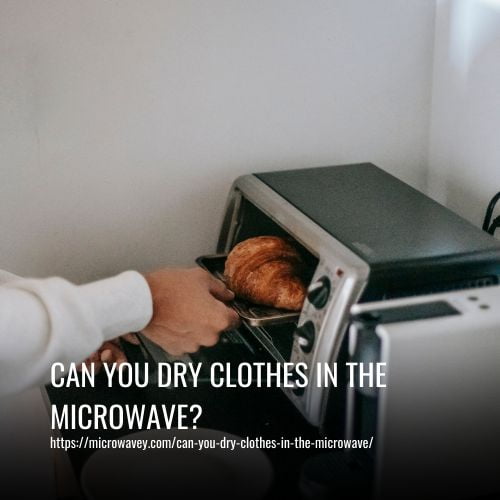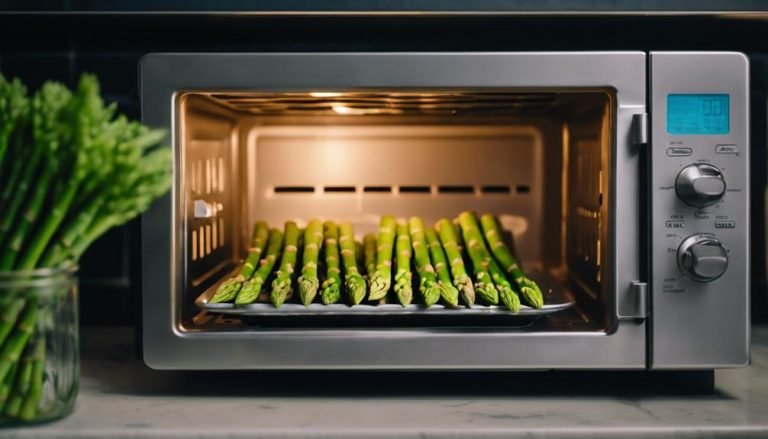Can You Dry Clothes in The Microwave?
No, you should never attempt to dry clothes in the microwave. Microwaves use electromagnetic waves to heat food, and clothing fabrics are not equipped to handle the intense heat generated by a microwave oven. Attempting to dry clothes in the microwave can lead to electrical fires and cause damage to the appliance. It’s best to stick to regular drying methods like air-drying clothes or using a tumble dryer. If you need to speed up the drying process, try using a hair dryer or hanging your damp garments on a shower rod or clotheshorse.

How to Dry Microwave-Safe Clothes in a Microwave
In certain circumstances, such as during an emergency or when conventional methods are unavailable, you may need to quickly dry clothes using a microwave. Here’s how to do it safely.
1. Prepare the Clothes
- Ensure that the cloth is relatively small and does not contain any metal or plastic elements.
- Avoid attempting to dry dirty or soiled clothes, as this may cause unpleasant odors.
2. Protect the Microwave
- Cover the cloth with a microwave-safe bowl or plate to prevent any potential fire hazards.
- This precaution ensures that if the clothing catches fire, only the item and the bowl will need to be replaced, rather than the entire microwave.
3. Adjust the Temperature
- Set the microwave to approximately 50% power to minimize the risk of overheating.
- Place the clothing item in the microwave and heat it for only 10 seconds to begin the drying process.
4. Check the Clothing’s Temperature and Dryness
- Use potholders to carefully remove the clothing from the microwave.
- Gently touch the fabric to assess its temperature and ensure it is not excessively hot. Allow it to cool down if needed.
- Check if the clothing is adequately dried. If not, repeat the previous steps, using 50% power and 10-second intervals, until the fabric is mostly dry.
- Once the clothing is mostly dry, let it rest for a few minutes in the microwave to fully dry.
Once the cloth is mostly dry, it’s essential to air-dry it completely by putting it on a hanger for a few minutes. This will allow any excess moisture to evaporate, leaving the cloth completely dry and ready to wear.
The Drawbacks Of Using A Microwave To Dry Clothes
Using a microwave to dry clothes may seem like a quick fix, but it can lead to several potential drawbacks. One risk is the possibility of shrinking fabrics, which can happen due to the intense heat produced by the microwave.
Microwaving clothes with metal buttons or zippers can cause electrical fires, which can be hazardous. Delicate materials or synthetic fibers are also at risk of being damaged if placed in a microwave.
Top Tips for Using an Oven to Dry Clothes
Using an oven to dry clothes is not the most effective way, but it can be used for small items if done correctly. Here are the top tips for using an oven to dry clothes:
- Remove excess water from the clothes before putting them in the oven.
- Turn off the oven immediately if any clothes start to smoke, or burn, or if there is a strange smell.
- Limit the amount of clothing you put in the oven to avoid overcrowding, which could lead to uneven drying and potential burning.
- Check clothes periodically to ensure they are drying evenly and not overheating.
FAQs
Yes, you can microwave flannel fabric if it is 100% cotton and does not have any metal accents. Make sure to check the care instructions on the fabric to ensure it is safe to microwave.
No, it is not safe to put polyester thread in the microwave. Polyester is a synthetic fabric that contains plastic, and microwaving it can cause the thread to melt. It’s best to avoid putting any polyester products in the microwave.
Try air-drying your clothes on a clothesline or drying rack, or use a hair dryer to help speed up the drying process. If you have a tumble dryer, use the lowest heat setting for delicate fabrics or synthetic materials. You can also use a baking tray or clotheshorse to help air dry clothes faster.
While the microwave oven uses electromagnetic waves to heat food, it can also cause metal objects to spark and ignite, potentially leading to electrical fires. Synthetic materials can melt and delicate fabrics may shrink or become damaged when exposed to intense heat.
Yes, you can dry a towel in a microwave. Make sure to wring out any excess water and place the towel on a microwave-safe container or baking sheet. Set the microwave to the lowest heat setting and heat in short intervals, checking the towel frequently until it is dry.
No, you should not microwave gloves. Microwaving gloves can cause them to catch fire or melt due to the heat generated in the microwave. Instead, it is recommended to air dry them or use a clothes dryer.
If your gloves are wet and need to be dried quickly, using a hair dryer on the lowest heat setting or placing them on a clothes horse near a heat source could be an alternative method.
Air-drying clothes, using a tumble dryer, using a clothes horse or drying rack, using a hair dryer, or even hanging your garments on a shower rod or outdoor clothesline. The most appropriate method will depend on the type of fabric, the weather conditions, and the time available for drying.
Final Words
Microwaving laundry can be a quick and efficient method to dry clothes, but it’s crucial to consider a few key points before trying this method. Delicate fabrics and synthetic materials may be susceptible to shrinkage or damage, so it’s important to check the care label and avoid using this method if not recommended.
Additionally, safety precautions should be taken to prevent the risk of fire, such as removing any metal buttons or zippers before microwaving and using microwave-safe materials. While this method may work for some items of clothing, it’s essential to evaluate the type of fabric and excess water before attempting.






